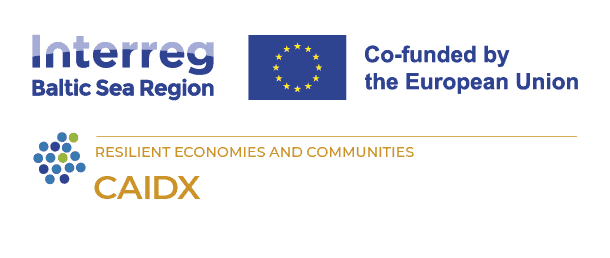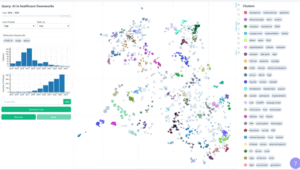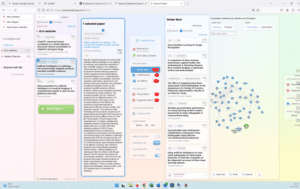
AI-powered tools to boost your literature review
09 August 2024
One of the aims of CAIDX is to provide researchers and developers with links to useful tools for their work. The first step in any research is to get an overview of the domain you are working in, and in particular the state of the art in the context of your research question or product idea. This step includes a solid review of the literature. In this short article, we present some practical tools to get you started.
Besides useful tools it is advisable to have a good strategy for systematic and structured literature research. The PICO process or framework is often used or required for this purpose and for literature searches for regulatory processes like MDCG guidelines or MEDDEV 2.78/1 rev.4. A. If you are not yet familiar with PICO and the PICO variants you may check the following blog article from Lea Wettlaufer at Johner Institute.
Absclust
If you are just starting out in a research area or want to see the big picture, try Absclust. Absclust is an AI-powered tool designed to help researchers cluster and organise scientific abstracts. Using advanced machine learning algorithms, Absclust groups similar abstracts together, helping researchers identify trends, themes and key areas of focus within large sets of academic literature. This tool is particularly useful for conducting systematic reviews, meta-analyses and exploratory research, as it streamlines the process of sifting through large numbers of abstracts and facilitates a deeper understanding of the research landscape. Absclust increases research efficiency by providing clear, organised insights into complex and large collections of academic abstracts.

Semantic Scholar
Semantic Scholar is an AI-powered academic search engine developed by the Allen Institute for AI. It is designed to help researchers find and understand scientific papers more efficiently. Launched in 2015, Semantic Scholar uses advanced machine learning, natural language processing, and data mining techniques to improve the discovery of relevant academic literature in various fields, including computer science, biology, medicine, and more.
The platform provides concise summaries of research papers, as well as detailed citation information and influence metrics. It highlights influential papers and tracks how research is connected through citations, making it easier to trace the development of ideas and identify seminal work in a field. The platform also categorises papers by topic and location, providing insights into trends and emerging areas of research. The platform integrates open access papers and datasets, ensuring that researchers have access to freely available resources. It also links to supplementary materials, such as datasets and code, to facilitate reproducibility and further research.
Research Rabbit
Research Rabbit is another tool designed to help researchers discover and organise academic literature. It works like an intelligent research assistant, helping users find relevant papers, explore connections between studies, and efficiently manage their research collections. Research Rabbit offers personalised recommendations, visualises relationships between papers and provides insights that facilitate a deeper understanding of research topics. This tool aims to streamline the literature review process, increase research productivity, and help researchers stay abreast of the latest developments in their fields. Research Rabbit supports collaboration by allowing users to share collections and insights with colleagues, encouraging teamwork and collective research efforts. The tool keeps users abreast of the latest research developments by providing real-time updates on new publications related to their interests.

Puraite
Puraite is designed to transform the systematic review process in medical research with AI-powered screening and data extraction methods. The tool aims to accelerate drug discovery and development by automating the screening of vast amounts of medical literature, identifying the most relevant studies and effortlessly extracting critical data. According to the authors, the models are fully transparent, ensuring human traceability at every step.
Text by Thomas Karopka, banner image by Freepik





